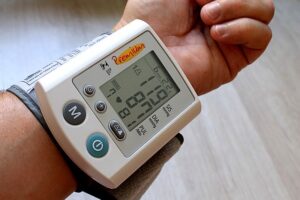 In southwest Iceland, there is a fiber optic cable that connects two geothermal power plants. It is used as every casual fiber optic cable for data transmitting. However, in 2015 a research team decided to apply it for detecting seismic waves of earthquakes, so they could draw a map of the underground features including geological faults. And distributed acoustic sensing (DAS) made it possible.
In southwest Iceland, there is a fiber optic cable that connects two geothermal power plants. It is used as every casual fiber optic cable for data transmitting. However, in 2015 a research team decided to apply it for detecting seismic waves of earthquakes, so they could draw a map of the underground features including geological faults. And distributed acoustic sensing (DAS) made it possible.
Scientists made their discovery thanks to distributed acoustic sensing (DAS). This technique measures any tiny changes to the phase of fiber optic laser pulses that reflect from many points on fiber optics. The thing is an acoustic or seismic wave stretches and compresses fiber optics when it passes through the ground where the fiber optic is attached. DAS systems can provide the necessary information at a reasonable cost. Moreover, the usual seismometers couldn’t reach such kind of information.
In fact, Iceland is not the first country where the distributed acoustic sensing (DAS) technology was applied. Before that, fiber optic cables were produced in other seismic regions, for example, in the USA. The precise information on earthquakes’ location, nearby faults was got thanks to the fiber optics both on the seabed and on land. Scientists consider that by using a million kilometers of fiber optic cable around the world, we can broaden quake monitoring thanks to the network of seismometers with fiber optic sensors.
Distributed acoustic sensing (DAS) has been previously applied mostly in the fossil-fuels industry. The sensing technology helped to monitor boreholes and image deposits of oil and gas. Nowadays, it has many other applications for extracting data from vibration in the ground. Distributed acoustic sensing can even shed some light on global warming by studying the glaciers’ movements in the Antarctic and Alaska.
Besides earthquakes, researchers proved that they can use DAS systems for studying other natural hazards. The research team from Italy showed that they can detect the strain changes connected to the volcanic phenomena which include explosions. They also discovered seismic waves slowing through presumed fault zones on the volcano.
In the meantime, scientists from Japan demonstrated that DAS technology can monitor submarine volcanoes. The researchers measured the signals from the fiber optic cable on the seafloor. They found out that fiber optic sensors could produce coherent measurements that are needed for underwater eruptions’ recording.
Distributed sensing is an effective instrument that provides us with a lot of data that we can’t observe with the naked eye. Considering how widely fiber optic lines are used, distributed acoustic sensing (DAS) can give many possibilities to scientists and society.
Optromix is a DAS system manufacturer that provides top-of-the-line distributed acoustic sensing systems suitable for monitoring commerce networks. If you have any questions or would like to buy a DAS system, please contact us at info@optromix.com


 During the last 60 years, fiber optic technology has been applied to improve the efficiency of developed systems in various spheres like medicine, vehicles, and other industries. Modern fiber optic solutions expand the abilities by implementing levels of data and sensing technology in the energy, medical field, and even aerospace. There are various fiber optic solutions that help researchers improve their development and make new discoveries in science.
During the last 60 years, fiber optic technology has been applied to improve the efficiency of developed systems in various spheres like medicine, vehicles, and other industries. Modern fiber optic solutions expand the abilities by implementing levels of data and sensing technology in the energy, medical field, and even aerospace. There are various fiber optic solutions that help researchers improve their development and make new discoveries in science. A group of scientists from China has designed a very sensitive tiny
A group of scientists from China has designed a very sensitive tiny  Nowadays researchers tend to use fusion as a safe energy source at power plants. Nevertheless, this process is dangerous. It requires reliable
Nowadays researchers tend to use fusion as a safe energy source at power plants. Nevertheless, this process is dangerous. It requires reliable Passive
Passive  Common communication channels apply fibers in
Common communication channels apply fibers in  Nowadays
Nowadays A novel
A novel  A team of scientists from Israel and Russia has developed a novel, straightforward, and low-cost
A team of scientists from Israel and Russia has developed a novel, straightforward, and low-cost  A team of scientists from Denmark in a collaboration with chemical engineers has presented novel accurate
A team of scientists from Denmark in a collaboration with chemical engineers has presented novel accurate